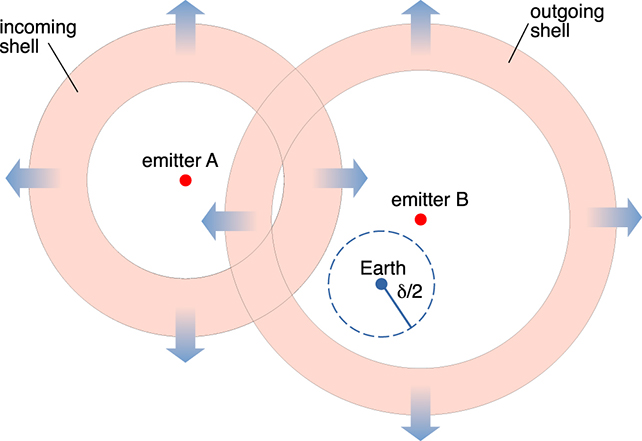To the best of our knowledge, humans have never been contacted by aliens from the depths of space. Yet statistically speaking, we shouldn't be alone.
Like a spurned lover, we've desperately tried to work out why nobody has called, coming up with one possible excuse after another.
A researcher from the Laboratory of Statistical Biophysics at the École Polytechnique Fédérale de Lausanne (EPFL) in Switzerland has now come up with yet enother explanation for the radio silence, one inspired by the humble sponge.
"We've only been looking for 60 years," says biophysicist Claudio Grimaldi. "Earth could simply be in a bubble that just happens to be devoid of radio waves emitted by extraterrestrial life."
In short, there's just too much space to scan, and most likely not enough alien transmissions cross our path. That's based on a statistical model previously used to study porous materials like sponges – only instead of pores within a material, it was deployed to assess the distribution of extraterrestrial signal emitters that may, or may not, be somewhere out there in space.
The message is to stay patient. Scanning for traces of communications out in the Universe requires time, effort, and money, and there is some debate as to whether or not the search for extraterrestrial intelligence (SETI) is worth our while.
The research model starts with the assumption that there's at least one electromagnetic signal of technological origin in the Milky Way at any given time, and that Earth has been in a quiet bubble (or sponge pore) for at least six decades, if not more.
If that's the case, then statistically there are fewer than 1 to 5 electromagnetic emissions per century anywhere in our galaxy. To put it another way, they're about as common as supernovas in the Milky Way – so not very common at all.
In assessments like this that involve probability, there are often assumptions that can be massaged. It's possible to adjust factors to be a little more optimistic (or pessimistic), adjusting the likelihood of catching a signal in the future.

Going by the most optimistic scenario, with the conditions set out above, Grimaldi says it could be at least 60 years before we get a hit on an alien transmission. In the least optimistic scenario, we're looking at a wait of more like 2,000 years. In both cases, we'd need to have a radio telescope pointed in just the right direction.
"We may have been unlucky in that we discovered how to use radio telescopes just as we were crossing a portion of space in which electromagnetic signals from other civilizations were absent," says Grimaldi.
"To me, this hypothesis seems less extreme than assuming that we are constantly bombarded by signals from all sides but are, for some reason, unable to detect them."
As the instruments we use to peer into space continue to get better and better, we're discovering more and more planets that might have the right conditions for life to exist on them – and that means a greater chance that alien life is trying to get in touch.
We've still got a lot of space to cover in the search though, which is why modeling is so important to figure out where to look. If an alien civilization has developed, for example, it may be clustered around a group of planets, and not evenly spread out as the analysis in this study assumed.
Grimaldi suggests that the best way forward is commensal investigations: so looking for signals in data collected by telescopes that are focussed on other missions, rather than using telescopes specifically to look for alien communications.
"The best strategy might be to adopt the SETI community's past approach of using data from other astrophysical studies – detecting radio emissions from other stars or galaxies – to see if they contain any technosignals, and make that the standard practice," says Grimaldi.
The research has been published in the The Astronomical Journal.
